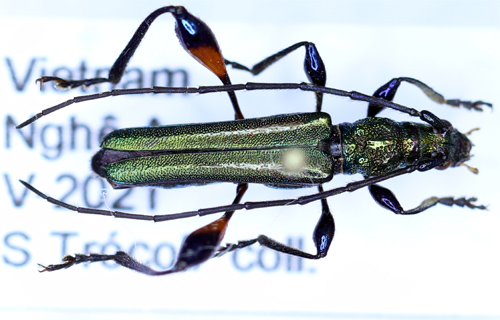| T O P I C R E V I E W |
| Sergi |
Posted - 12/12/2021 : 12:33:10

106.45 KB
From Vietnam, Nghe An, Size: 12mm |
| 6 L A T E S T R E P L I E S (Newest First) |
| Xavier |
Posted - 07/06/2025 : 20:02:34
I don't have Artimpaza pulchra Gressitt & Rondon, 1970 from Laos, so I'm not sure whether the Vietnamese species is different. But it could be. |
| FraRug |
Posted - 07/06/2025 : 17:49:29
Good evening Xavier; the problem you raise is serious; in fact in the holotype (male) of A. pulchra the antennae protrude from the elytral apex with the last four articles.
However I have photos of pairs of A. pulchra from Vietnam in which the male's antennae exceed the elytral apex by only three and a half or three articles.
It should be verified whether this falls within the variability of the species.
(in Callichromatini, the length of the antennae also depends on the development of the individual specimens...)
My specimens are 14-15 mm and that of Sergi is smaller.
From what I see, the specimen of Sergi seems to be a male. |
| Xavier |
Posted - 06/06/2025 : 17:26:58
quote:
Originally posted by FraRug
Artimpaza pulchra Gressitt & Rondon, 1970. With extremely reduced red longitudinal elytral stripes, for me...
If Sergi's specimen is a male, I'm not agree: HT male has much longer antennae.
Here a female from Vietnam(Tam Dao) :

157.59 KB |
| FraRug |
Posted - 06/06/2025 : 16:37:03
Artimpaza pulchra Gressitt & Rondon, 1970. With extremely reduced red longitudinal elytral stripes, for me...
|
| dryobius |
Posted - 15/09/2023 : 05:04:26
I have this, also. Does anybody know if its new? |
| Xavier |
Posted - 12/12/2021 : 13:49:17
Artimpaza sp. |


